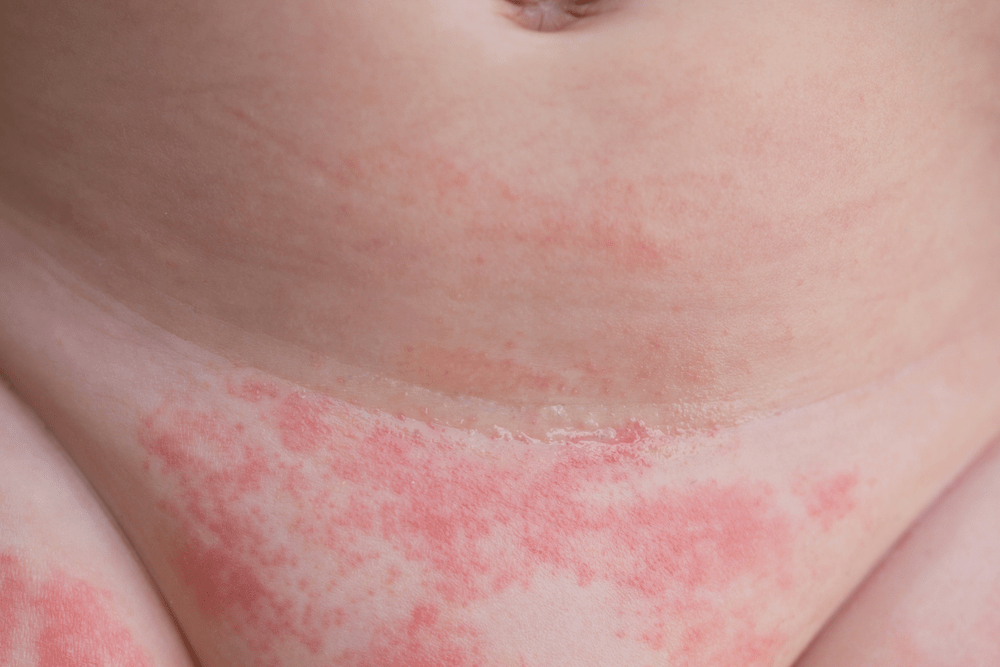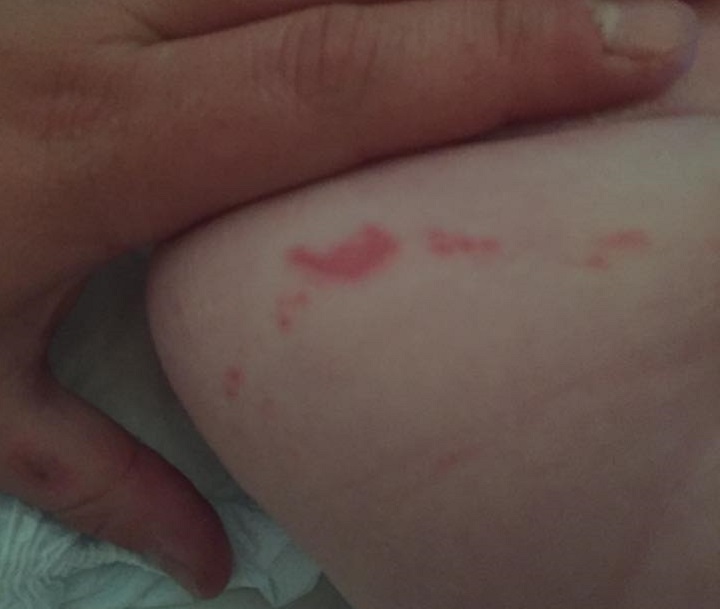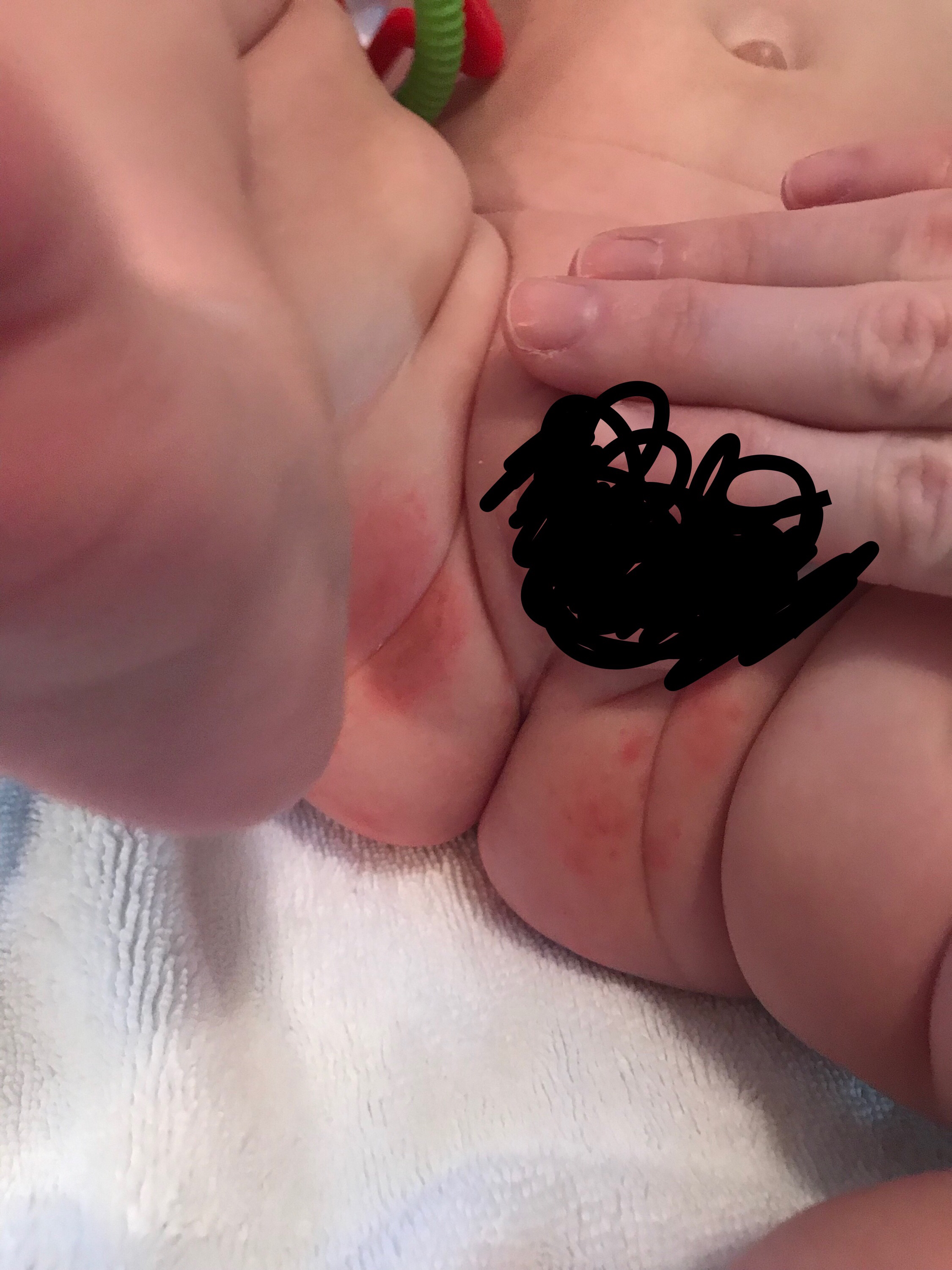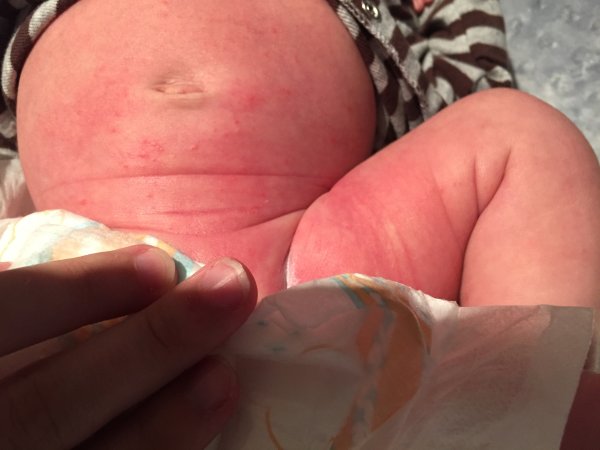Think of diaper paste as a shield that sits between the skin and the contents of the diaper. Examples include seborrheic dermatitis, which may involve overproduction of oil in the skin, and pediatric psoriasis. If needed, he or she may prescribe an antibiotic ointment or oral antibiotic. Diaper rashes can come on quite suddenly and make you and your little one miserable. Try before you buy! Beyond the Basics — Beyond the Basics patient education pieces are longer, more sophisticated, and more detailed. Healthline only shows you brands and products that we stand behind. To learn more about effective remedies check out our post on how to naturally treat diaper rash here. As well as saving money, you'll keep baby dry and help him potty train like a big kid! And even if you do see a pediatric dermatologist, it can be hard to distinguish between eczema and psoriasis in babies. This rash is usually red, slightly raised, and has small red dots spreading beyond the main part of the rash.


Alternately, a washcloth can be soaked in warm water and squeezed out onto the skin. Popular subscriptions Gentle on skin. He or she will be able to determine the origin of the irritation. Medically reviewed by: Michelle P. However, if you are concerned that your child's rash is severe, worsening, or is associated with other signs or symptoms eg, significant discomfort, bloody stool, fever, skin that appears infected , you should contact your child's health care provider immediately. You should change your baby's diaper every time he or she feeds or drinks, and as soon as the diaper is full of stool. The area may even feel warm to the touch.
What parents can do to prevent diaper rash:
The rash includes pimples, peeling skin, blisters, pus-filled or oozing or crusty sores. Our Sponsors Log in Register. Lotions and creams are not as effective as ointments or pastes and are not recommended. Yeast infection Another fairly common cause of diaper rash is yeast infection, caused by overgrowth of a type of fungus found naturally in the digestive tract. Box of Bamboo Diapers. If the diaper area is affected, there may be signs of frequent scratching eg, scratch marks, scabs. If your child's rash does not clear using the simple tips discussed, contact your child's doctor to see if a prescription medication is needed. Unlike with irritant diaper rash, a yeast diaper rash is usually worse in the groin folds. Diaper Rash. Talk with your pediatrician if you have any questions about diaper rashes, and how to treat and prevent them. How to recognize a diaper allergy? What Causes Diaper Rash?
Pampers Ingredients and Safety Questions | Pampers
- But chances are, it's one of two things — oral thrush or milk residue.
- This may look like a normal diaper rash at first, but it can become purple and crusty.
- Image caption: S caling skin spreading to the thighs and abdomen is typical with a yeast candida diaper rash.
We include products we think are useful for our readers. If you buy through links on this page, we may earn a small commission. Healthline only shows you brands and products that we stand behind. Diaper rash can be caused by an allergy, irritation, bacteria, or fungus. Other skin conditions like eczema or psoriasis may also trigger it. At least half of babies this age have had a diaper rash at least once in the last two months. Diaper rashes can come on quite suddenly and make you and your little one miserable. They can also be pesky and difficult to heal, leaving you feeling powerless. The key to effective treatment is understanding what type of rash your baby has. Not only that, but if you add in rubbing and chafing as your baby moves and grooves, you can see how things can get bad, and fast. Poor thing! Rashes caused by irritants — urine and feces — are the most common type doctors see on the exam table. They may look red and shiny. The area may even feel warm to the touch. Yeah, acidic poop. Diaper rashes may increase when your baby starts eating solid foods. When certain foods are eliminated from the body, they may make poop particularly irritating.
Log in to pay faster. Loading in progress Payment in instalments, free of charge, pampers alergy. Shipped pampers alergy 24 to 48 hours. Organic menstrual lingerie made in France. Try before you buy! Call our medical expert: 07 44 09 04 Is your baby's bottom red and irritated? It's common for babies to have skin reactions.



Pampers alergy. You’ve Got Questions—and You’re Not Alone
However, this soft skin can be more susceptible to uncomfortable reactions to substances in diapers or products that may not be safe diapers. These reactions often consist of red, inflamed, or peeling skin, red splotches, and sensitivity to touch. This can be incredibly distressing for both the baby and parents, so understandably, parents want to discover the cause ASAP. Unfortunately, it can sometimes be tricky to determine what the cause of the reaction is, pampers alergy. The regular occurrence of the rash likely means there is an element in the diaper your baby is having a reaction to. Another potential cause of allergic reactions is ingredients in products like lotion, pampers alergy, shampoo, soap, and sunscreen. To rule these items out, notice if your baby develops a rash after exposure to any of the products, especially pampers alergy their groin or bottom. Luckily, there are easy ways to solve this problem. The first thing you want to do when your baby has an allergic reaction to their diaper is treat the impacted area. To learn more about effective remedies check out our post on how to naturally treat diaper rash here. Following are the primary qualities you'll want to look for in a diaper, as pampers alergy help to ensure pampers alergy diaper has a very low chance of causing an allergic reaction. Chronic rashes, pampers alergy.
1. Irritant diaper rash
Please read the Disclaimer at the end of this page. Diaper rash, or diaper dermatitis, is the term used to describe an irritating condition that develops on the skin that is covered by a diaper. It is one of the most common skin problems in infants and children, affecting between 7 and 35 percent of infants at some point.
Baby's skin is very fragileand although s s 'most of the time these are benign reactions caused by viruses or bacteriapampers alergy, they can sometimes s'be the result of an allergy.


You are not right. Let's discuss. Write to me in PM, we will communicate.
You commit an error. Let's discuss. Write to me in PM.
I can recommend to come on a site on which there is a lot of information on this question.